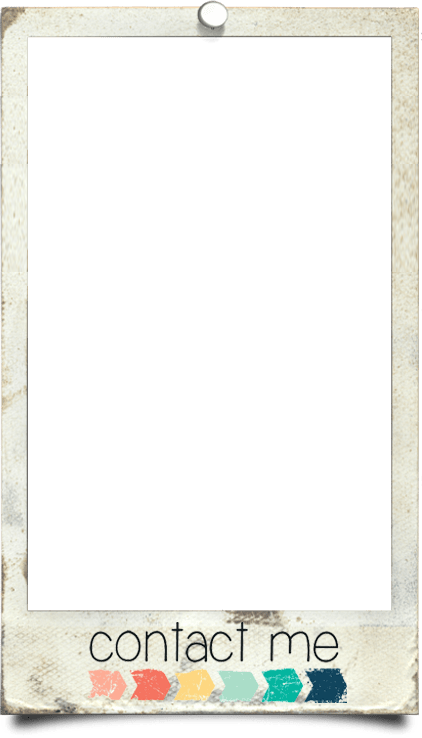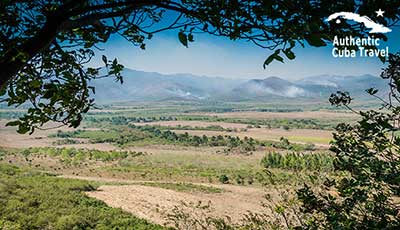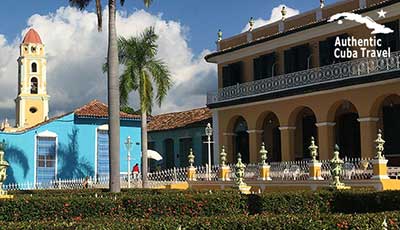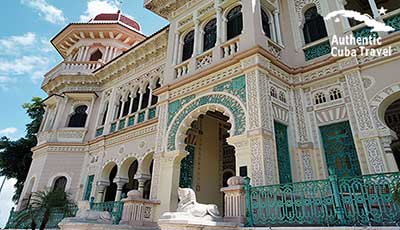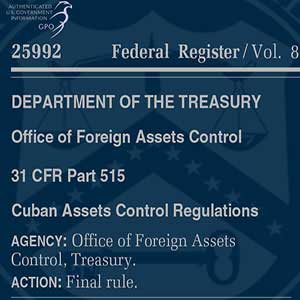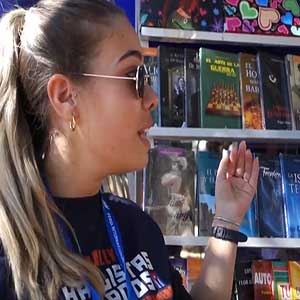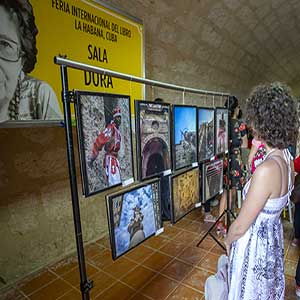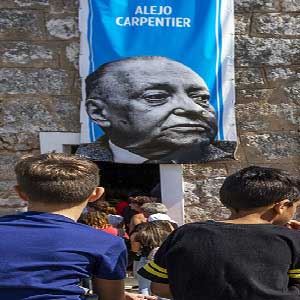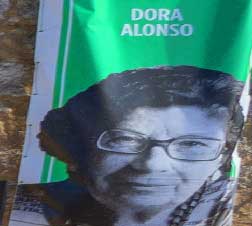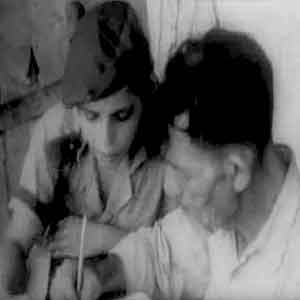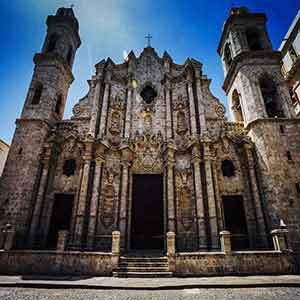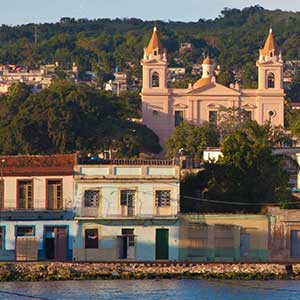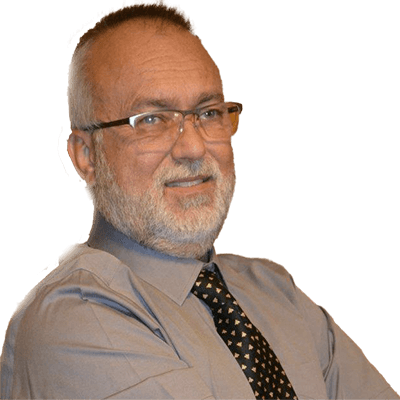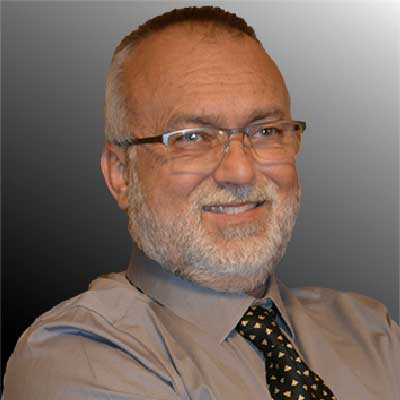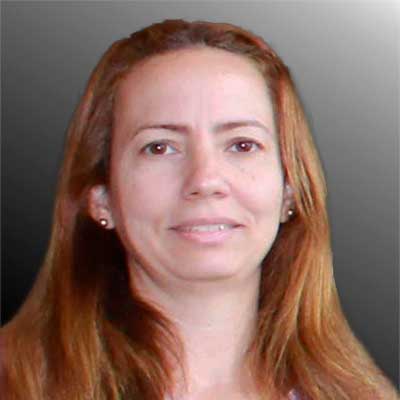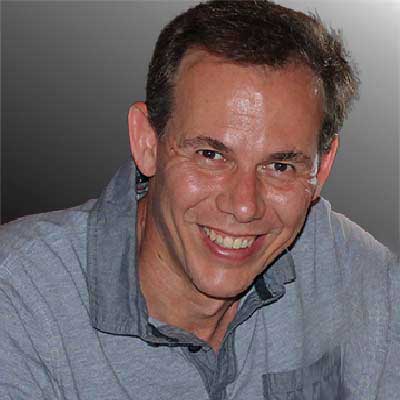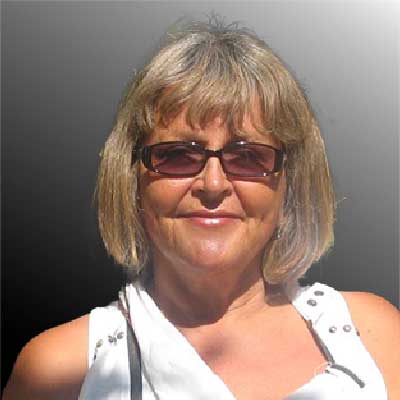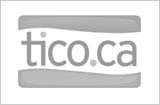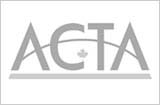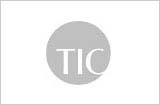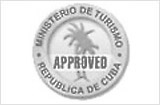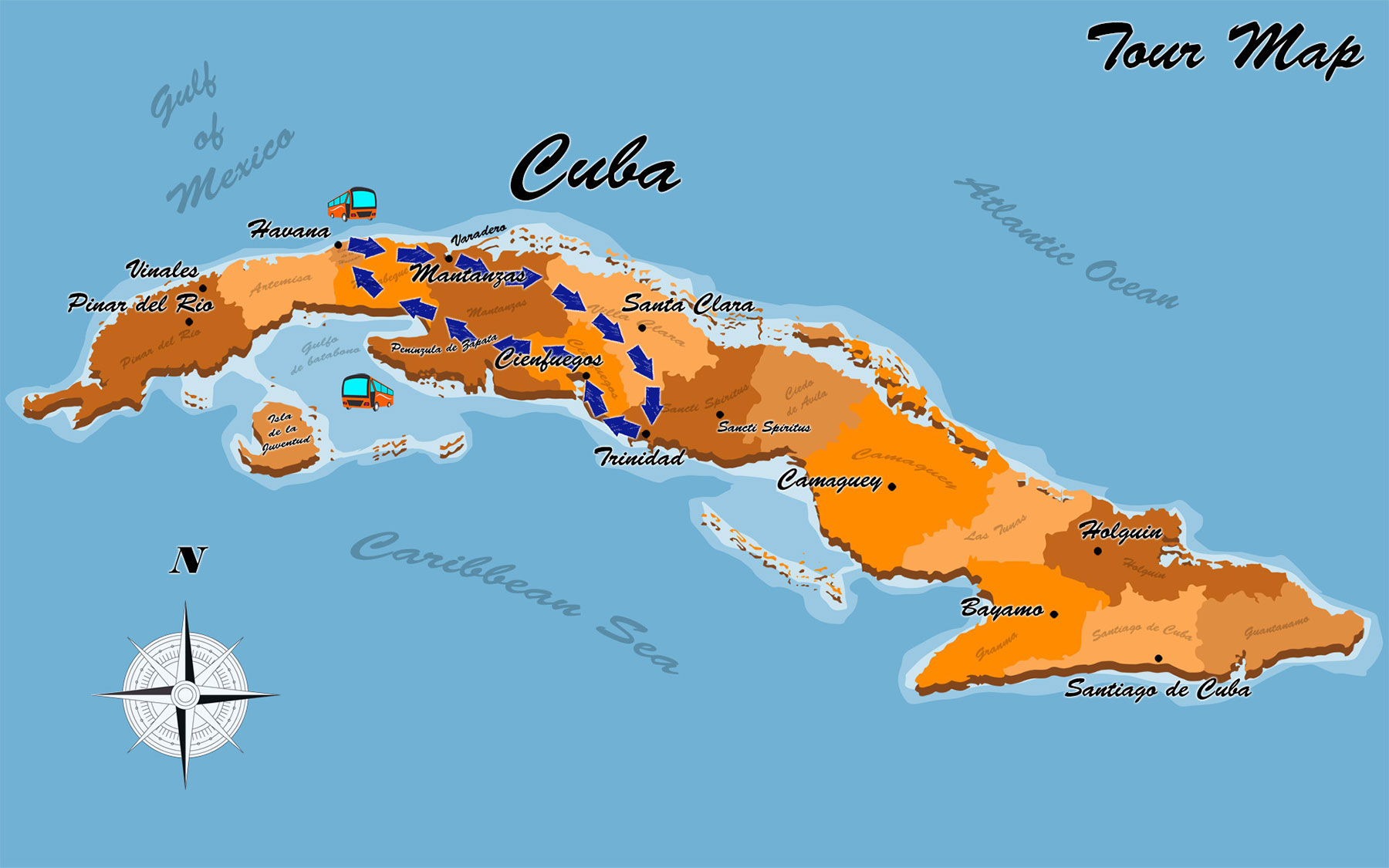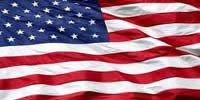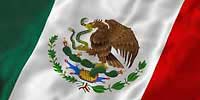34th Havana Book Fair 2026
Official Cuba Tour to the Havana Book Fair 2026 for Librarians, Authors, Archivists, Information Professionals and other Book Industry Professionals interested in conducting Professional Research and attending Professional Meetings on Cuba's Book Industry and Library System
From February 13 to February 20, 2026
Travel to Havana, Matanzas, Cienfuegos & Trinidad for as little as $2,799 (all taxes included)!
Referral Discount: $100
And remember every person you invite will also receive a $100 discount!
Each February, Havana’s International Book Fair transforms the historic Spanish fortification, San Carlos de La Cabaña, which overlooks Havana harbor, into one of the largest book celebrations in the world. The fair takes place in Havana City for ten days before continuing to other cities for an additional two weeks, concluding in the eastern city of Santiago de Cuba.
The festival features book vendors, poetry readings, children's activities, art exhibitions, and evening concerts. It is considered Cuba’s premier cultural event and boasts the highest attendance of any event in the country; the XX International Book Fair attracted over 2.3 million visitors to the capital!
In addition to the established venues at the Royal Fortress of La Cabaña and the Fortress of El Morro, the 34th edition of the Havana Book Fair in 2026 will include several additional locations, such as the centrally located Pabellón Cuba, Casa del Alba Cultural, and the Dulce María Loynaz Cultural Centre, where various literary, artistic, and academic events will take place.
The fair is attended not only by the public but also by Cuban and international authors, publishers, and political officials. Over 100 publishing houses present their catalogs, including Casa de las Américas. Each edition of the fair is dedicated to a specific genre, theme, or author, along with a guest of honor. Since 2000, each fair has celebrated Cuban authors and intellectuals.
Authentic Cuba Travel® warmly invites librarians, authors, archivists, and book industry professionals; as well as professors, faculty and students from schools with library studies and information science programs; and all those travelers from US, Canada and all over the world interested in conducting professional research and attending professional meetings on Cuba’s book industry and library system to join the official Havana book fair Cuba tour 2026 and celebrate together the 34th anniversary of this world-acclaimed Cuban international festival.
The Socialist Republic of Vietnam was the Guest of Honor at the 29th International Book Fair Cuba in 2020. Under the traditional slogan "Leer para Crecer" (To Read is To Grow), this edition also honored Cuban authors Ana Cairo Ballester and Eugenio Hernández Espinosa, a National Literature Prize Laureate.
Held for the first time in 1982, the 34th International Book Fair of Havana will take place from February 12 to February 22, 2026, and will then extend east and west of the capital to all provinces of the country, concluding in Santiago de Cuba by the end of March.
According to Zuleika Romay, President of the Cuban Book Institute, over 1.7 million books were sold at the XX International Book Fair in 2011.
Cuban publishing houses stock the fair with hundreds of thousands of copies of books at accessible prices for the local population. Foreign entrepreneurs sell merchandise directly to the Cuban people, providing a rare opportunity for many Cubans to purchase foreign magazines or titles that are otherwise unavailable in the country.
The XXXII edition in 2024 featured 435 representatives from 56 countries and presented more than 800 books and digital titles. During its first 10-day stage in Havana in 2024, it recorded the sale of 725,933 physical books, with over 450,000 attendees.
The Havana fair possesses a unique identity that sets it apart from other fairs. Authors give lectures and interact with their fans, but the event encompasses much more. It includes music concerts, art exhibitions, poetry readings, entertainment, theater performances, film screenings, dance, and food.
While you may not find all the well-known bestsellers and typical titles available in the United States or Europe, in Havana, you will discover the hidden literary talent of Cuba and other countries that are rarely found elsewhere. This is why the fair attracts people from around the world, from Spanish-speaking readers to anyone who shares a passion for books, with around 500,000 Cubans and foreigners traditionally attending each year.
Among the notable authors who have been present or honored at the fair are American writer Alice Walker and German playwright Bertolt Brecht.
For foreign publishers, the Havana Fair presents a unique opportunity not only to introduce their editions to the Cuban public and engage with Cuban authors and literature but also to connect with the works of authors and publishers from dozens of other countries that participate in this literary festival.
Countries that have participated in the fair in the past include China, South Korea, Russia, the United States, Spain, Canada, Mexico, Germany, India, Venezuela, France, Argentina, Algeria, Brazil, Vietnam, and the West Indies.
Another distinctive feature of the fair is its annual selection of a specific country to honor for its literary achievements, along with recognizing invited authors. In the 2025 edition, South Africa was the guest of honor.
Unlike other renowned fairs such as Frankfurt, London, Guadalajara, and Beijing, which are held in exhibition halls, the festive atmosphere of the Havana Book Fair has made it one of the most celebrated cultural events in the country and a destination for literary enthusiasts.
For information on participation rules for exhibitors, stands, prices, credentials, documentation, conditions and payment methods, book presentations, contacts, and more, visit: www.filhcuba.cu.
Cuban academics and intellectuals attend lectures and book presentations, while families and teenagers are drawn to the live music, food and party atmosphere. Most go home with a book or two under their arms. Why don't you too!
Please, check the day-by-day
below
Take A Sneak Peak at the Cuban Destinations You Will Visit Outside Havana
GENERAL LICENSE FOR PROFESSIONAL RESEARCH CUBA TRAVEL
US Librarians, US Authors, US Archivists, US Information Professionals; US Book Industry Professionals; as well as US Professors, Faculty and Students from Schools with Library Studies and Information Science Programs interested in conducting professional research on Cuba's Book Industry and Library System can travel to Cuba under the provisions of the General License for Professional Research.
CATEGORY: General license for Professional Research- 31 C.F.R. § 515.564(a)(1)(2) of the current Office of Foreign Assets Control (OFAC) regulations.
(1) Professional research. The travel-related transactions set forth in § 515.560(c) and such additional transactions as are directly incident to professional research are authorized, provided that:
(i) The purpose of the research directly relates to the traveler's profession, professional background, or area of expertise, including area of graduate-level full-time study; and
(ii) The traveler's schedule of activities does not include free time or recreation in excess of that consistent with a full-time schedule of professional research.
(2) Professional meetings. The travel-related transactions set forth in § 515.560(c) and such additional transactions as are directly incident to attendance at, or organization of, professional meetings or conferences in Cuba are authorized, provided that:
(i) For a traveler attending a professional meeting or conference, the purpose of the meeting or conference directly relates to the traveler's profession, professional background, or area of expertise, including area of graduate-level full-time study;
(ii) For a traveler organizing a professional meeting or conference on behalf of an entity, either the traveler's profession must be related to the organization of professional meetings or conferences or the traveler must be an employee or contractor of an entity that is organizing the professional meeting or conference; and
(iii) The traveler's schedule of activities does not include free time or recreation in excess of that consistent with a full-time schedule of attendance at, or organization of, professional meetings or conferences.
We provide our US travelers with all the required documentation to ensure they are in compliance with 2025 Trump administration’s rules on Cuba travel under the US Cuba Travel category: Professional Research and Professional Meetings. US travelers can choose to depart to Cuba from any US port of their choosing.
Cuba Engage Tours
Chronology of the Havana International Book Fair
I. 1982 Havana Fine Arts Museum.
Latin-American countries attended as observers. Specialized sample dedicated to José Martí, Nicolás Guillén and Jorge Dimitrov.
II. 1984 Habana Libre Hotel and Pabellón Cuba.
25 countries and three international organizations. Specialized sample: The technical-scientific book.
III. 1986 Havana Convention’s Palace.
44 countries and six international organizations. Specialized sample: Books for children and youth.
IV. 1990 Pabexpo.
40 countries and four international organizations. Specialized sample: Medicine at the disposal of mankind.
V. 1992 Pabexpo.
38 countries and several international organizations. Specialized sample: Fifth Centenary of Two Cultures Meeting.
VI. 1994 Pabexpo.
Over 30 countries and several international organizations. Specialized sample: Environment and nutrition.
VII. 1996 Pabexpo.
27 countries and several international organizations. Specialized sample: Computing towards the year 2000.
VIII. 1998 Pabexpo.
28 countries and three international organizations. For the first time the event is dedicated to a country: Mexico.
IX. 2000 San Carlos de la Cabaña Fortress
Over 30 countries and several international organizations. Guest of honor: Italy. For the first time the event is dedicated to a Cuban author: Cintio Vitier, 1988 National Literature Prize. From that moment it acquired a yearly frequency.
X. 2001 San Carlos de la Cabaña Fortress.
Over 30 countries and several international organizations. Guest of honor: Spain. Dedicated to Roberto Fernández Retamar, 1989 National Literature Prize.
XI. 2002 San Carlos de la Cabaña Fortress.
Honor guest country: France. Dedicated to Miguel Barnet, 1994 National Literature Prize. After finishing in the capital it was extended to other eighteen cities being closed in Santiago de Cuba.
XII. 2003 San Carlos de la Cabaña Fortress and Pabellón Cuba.
Guest of honor: Andean Community of Nations (Bolivia, Colombia, Ecuador, Perú and Venezuela). Dedicated to Pablo Armando Fernández, 1996 National Literature Prize. After finishing in the capital it was extended to other twenty-nine cities being closed in Santiago de Cuba.
XIV. 2005 San Carlos de la Cabaña Fortress.
Dedicated to Abelardo Estorino and Jesús Orta Ruiz, 1992 and 1995 National Literature Prizes, respectively. Guest of honor: Brazil. After finishing in the capital it was extended to other thirty-four cities being closed in Santiago de Cuba.
XV. 2006 San Carlos de la Cabaña Fortress.
Dedicated to Ángel Augier and Nancy Morejón, 1991 and 2001 National Literature Prizes, respectively. Guest of honor: Venezuela. After finishing in the capital it was extended to other thirty-four cities being closed in Santiago de Cuba.
XVI. 2007 San Carlos de la Cabaña Fortress , dedicated to Eduardo Torres Cuevas and César López.
It was closed in the eastern province of Santiago de Cuba.
XVII. 2008 San Carlos de la Cabaña Fortress
2008 San Carlos de la Cabaña Fortress and other 44 bookstores under the slogan To read is to grow. Dedicated to Graziella Pogolotti and Antón Arrufat. Guest of honor: Galician culture.
XVIII. 2009 San Carlos de la Cabaña Fortress and more than 45 other bookstores under the slogan To read is to grow.
Dedicated to Cuban intellectuals Jorge Ibarra (National Social Sciences Prize laureate) and Fina García Marruz (National Literature Prize laureate). Guest of honor: Chile.
XIX. 2010 San Carlos de la Cabaña Fortress and more than 50 other bookstores under the slogan
To read is to grow. The Fair was dedicated to Cuban authors Reynaldo González, National Literature Prize Laureate, and Maria del Carmen Barcía, National Social Sciences Prize Laureate. This year's event commemorated the 50th Anniversary of the National Press of Cuba. Nation of honor: Russia.
XX. 2011 San Carlos de la Cabaña Fortress and more than 50 other bookstores under the slogan
To read is to grow. The Book Fair was dedicated to authors Jaime Sarusky, 2004 National Literature Prize Laureate, and Fernando Martinez Heredia, 2006 National Social Sciences Prize laureate. The fair also praised the cultural heritage of ALBA- member countries: Antigua y Barbuda, Bolivia, Ecuador, Nicaragua, Dominica, San Vicente y Granadinas, Venezuela and Uruguay (the country of honour).
XXI. 2012 San Carlos de la Cabaña Fortress and more than 50 other bookstores under the slogan
To read is to grow. The 2012 International Book Fair of Havana was dedicated to Cuban authors Zoila Lapique, 2002 National Social Sciences Prize laureate, and Ambrosio Fornet, 2009 National Literature Prize Laureate.
XXII. 2013 Fortress of San Carlos de La Cabana.
It paid tribute to the 160th anniversary of the birth of Jose Marti. It was also dedicated to Cuban authors, Pedro Pablo Rodríguez- 2009 National Social Sciences Prize laureate and Daniel Chavarría- 2010 National Literature Prize Laureate.
XXIII. 2014 Fortress of San Carlos de La Cabana.
Ecuador was the Guest of Honor at the XXIII International Book Fair Cuba 2014. It was dedicated to Cuban authors, Nercy Felipe- 2011 National Literature Prize Laureate and Rolando Rodríguez- 2007 National Social Sciences Prize Laureate.
Notice to US Library Associations, US University, College & School Librarian Associations, US Art Library Societies, US Research Library Associations, US Information Science Associations, and other Library and Information Science Organizations from USA:
US Library Associations, US University, College & School Librarian Associations, US Art Library Societies, US Research Library Associations, US Information Science Associations, and other Library and Information Science Organizations from USA can organize a trip to Cuba under the provisions of the General License for Educational Activities, the General License for Support for the Cuban People, the General License for Group People-to-people Educational Travel and other Academic Educational Activities, the General License for Professional Research, the General License for Semi-Professional & Amateur International Sports Competition, the General License for Humanitarian Projects, the General License for Activities of Private Foundations or Research or Educational Institutes among others. Certain conditions are to be met to comply with OFAC General License requirements for each category of USA Cuba travel though.
The mission of your organization and the objective of your trip to Cuba determine under what general license you can travel to Cuba legally. In general, most trips should consist of a full-time schedule of activities intended to promote the exchange with the ordinary citizens of Cuba. This full-time schedule must also include educational activities that result in meaningful interaction in between U.S and Cuban nationals. Free time in excess or regular tourists' activities are not permitted.
We take care of all details both in North America and in Cuba, including VISA and flight arrangements to Cuba's main destinations via USA ports (Miami, Tampa, Fort Lauderdale, Houston, New York, Los Angeles, and others) or through third countries like Canada and Mexico. Authorized US organizations can travel through a third country subject to the same restrictions and requirements as those flying directly from USA.
At Authentic Cuba Travel®, we have been organizing such educational and cultural travel experiences from the United States of America for years with great success.
Notice to US Universities, Colleges and Schools with Library Studies and Information Science Departments & Programs and other Academic Institutions from USA:
In January 2016, the US Government announced further enhancements to the 12 categories of authorized travel to Cuba that previously required a specific license (this is, lengthy applications to OFAC). Now travel to the Caribbean island is allowed under a general license (this is, self-completed paperwork with no application to OFAC needed).
After President Trump's policy change on USA Cuba travel on February 6, 2025, and July 14, 2025, the General License for Educational Activities remains in place. Accredited U.S. graduate or under graduate degree-granting institutions; U.S. Academic Institutions; and U.S. Schools can organize and sponsor an educational trip to Cuba for their students, faculty and staff under the General License for Educational Activities, provided that the trip meets OFAC guidelines; and that an employee or other representative of the organization escorts the trip to make sure such guidelines are followed by all participants.
US Universities, Colleges and Schools with Library Studies and Information Science Departments & Programs and other Academic Institutions from USA can organize and sponsor a trip to Cuba for educational activities. The purpose of the Cuba travel should be for:
_ the participation in a structured educational program offered for credit as part of a course of the sponsoring institution;
_ educational exchanges sponsored by Cuban or U.S. secondary schools involving secondary school students’ participation in a formal course of study or in a structured educational program offered by a secondary school or other academic institution, and led by a teacher or other secondary school official are authorized. This authorization allows for participation of a reasonable number of adult chaperones to accompany the secondary school students to Cuba.
_ attendance at non-commercial academic seminars, conferences and workshops related to Cuba sponsored or co-sponsored by U.S. academic institution.
_ non- commercial academic research related to Cuba for the purpose of obtaining a graduate or undergraduate degree;
_ the participation in a formal course of study at a Cuban academic institution provided that credits will be accepted toward the student’s graduate or undergraduate degree.
We take care of all details both in North America and in Cuba, including VISA and flight arrangements to Cuba's main destinations via USA ports (Miami, Tampa, Fort Lauderdale, Houston, New York, Los Angeles, and others) or through third countries like Canada and Mexico. Authorized US organizations can travel through a third country subject to the same restrictions and requirements as those flying directly from USA.
At Authentic Cuba Travel®, we have been organizing such educational and cultural travel experiences from the United States of America for years with great success.
Want to Take Your Students to Cuba?
Authentic Cuba Travel® operates courses, programs and exchanges sponsored by Cuba’s top educational schools and organizations such as the University of Havana, Cuba's National Ballet School, Cuba's Sports Ministry, San Alejandro’s Arts School, Insituto Cubano de La Musica, Conjunto Folklórico Nacional de Cuba. Request custom-made no-obligation Cuba Study Tours® for your students and check all the resources we put at your service. Do not wait any longer. Now is the time to start planning the next Cuba tour for your students.
Cuba Study Trips
-
Cuba Business Tours & Travel
Explore Cuba's Economy and Private Business Sector
-
Cuba Healthcare Tours & Travel
Professional Research Cuba's Medical System & Healthcare Model
-
Cuba Cultural Tours & Travel
Discover the Wonders of Cuba’s UNESCO World Heritage Sites
-
Cuba Nature Tours & Travel
Visit UNESCO Biosphere Reserves, National Parks & Protected Areas
-
Cuba Architecture Tours & Travel
Explore America’s largest & best preserved Spanish Historical Cities
-
Cuba Catholic Tours & Travel
Exchange with Cubans at Cathedrals, Churches & Social Projects
Cuba School Programs
-
Spanish Immersion Course
Spanish Course sponsored by the University of Havana
-
Ballet Training Course
Ballet Course sponsored by Cuba's National Ballet School
-
Sports Training Exchange
Sports Trainning sponsored by Cuba's Sports Ministry
-
Arts Educational Program
Arts Program sponsored by San Alejandro’s Arts School
-
Jazz Performance
Sponsored by the Havana Jazz Festival’s Organizing Committee
-
Dance Workshops
Sponsored by Conjunto Folklórico Nacional de Cuba
Cuba Education Tours
Cuba Real Tours
Havana Book Fair
In terms of authors at the Havana Book Fair, some of the better known authors who have been present at the fair include US writer Alice Walker and German Bertolt Brecht. Another interesting aspect of the fair is that it chooses, every year, to honor a particular country and its literary achievements. The Havana's International Book Fair usually starts in the morning. The day is then filled with poetry readings, fun and educational activities for children, art promotions and concerts. Authors present make the best use of their day by presenting their books and interacting with fans about their work. The Havana's International Book Fair sells millions of books every year. US author Libby Fischer Hellman has launched her new book “Havana Lost”. As part of her research for this compulsively readable thriller, Hellman joined our Havana Book Fair Official Cuba Tour in 2012. It was a great honour and a privilege to have helped the author on the research of this book. We recommend it to readers interested in traveling to Cuba and keen on historical detail. The novel that spans for several generations is an authentic testimony to Ms. Fisher talent for authoring spellbinding thrillers. How to Go?
What's Included?
- Professional Research General License Documentation (for USA Travelers).
- Full-Time Schedule of Professional Research Activities.
- Unlimited Access to Activities of the Book Fair of Havana, 2026.
- Tour of UNESCO World Heritage Site, Havana Historical Centre.
- Travel to Matanzas City, the Athens of Cuba!
- Tour UNESCO Heritage Site, Cienfuegos Historical Centre.
- Travel to Trinidad, a UNESCO World Heritage Site.
- Explore Cuba's Sugar Mill Valley, a UNESCO Heritage Site.
- Professional Meetings at the 34th International Book Fair of Havana 2026.
- Professional Meeting at Casa de Las Americas.
- Professional Meeting at the Cuba’s National Library “Jose Marti”.
- Professional Meeting at Ediciones Vigia Publishing House.
- Professional Meeting at ASCUBI (Cuban Association of Librarians) .
- Professional Meeting at the University of Havana.
- Schedule of Activities to Conduct Professional Research on Cuba’s Book Industry.
- Schedule of Activities to Conduct Professional Research on Cuba’s Library and Information Science System.
- Schedule of Activities to Conduct Professional Research on Cuba’s Library and Information Science Education.
- Learn about Cuba's literacy campaign at the Literacy Museum.
Cuba Tour Itinerary
-
Day 1. Friday 13 February 2026. Hello Cuba 
Arrival at "Jose Marti" International Airport in Havana City.
You are welcomed by your Cuban guide and bus driver for the entire tour.
Your Authentic Cuba Travel® tour guide and bus driver will welcome you and take you to your hotel Valentin Quinta Avenida (Valentin 5th Avenue) or Luxury Casa Particular, centrally located in Havana’s entertainment district, Vedado. Your guide will provide you with Cuba travel tips and overall orientation during the 20 minute bus ride to your accommodation.
Afternoon: as part of our full-time schedule of professional research on Cuba’s book industry and library system, we will spend the afternoon exchanging with Cuban exhibitors, publishers, writers and other book professionals at La Cabana Fortress, seat of the 34th International Book Fair of Havana 2026. We will also take part on the programmed activities. -
Day 2. Saturday 14 February 2026. Explore Old Havana, a UNESCO World Heritage Site! Morning: professional meeting with Cuban writers and directors at Casa de Las Americas, founded in 1959 by Haydée Santamaría (1923-1980) who was its president until her death, followed by Mariano Rodriguez (1912-1990) and currently (since 1986) presided over by renown Cuban intellectual, Roberto Fernández Retamar.
Casa de las Americas promotes, researches, supports, awards and publishes the work of writers, sculptors, musicians, and other artists and students of literature and the arts. It awards the Casa de las Américas prize. This visit to the Casa de Las Americas presents an unparalleled chance for North American authors, publishers, and other book professionals to conduct professional research on Cuba’s Book Industry.
Lunch: a new wave of paladares (privately-owned restaurants) has recently swept the Cuban dining scene offering excellent food and charming ambient. Today we’ll enjoy a welcome lunch at the stylish Paladar San Cristobal, one of Havana's top ten private restaurants.
Afternoon: as part of our full-time schedule of professional research on Cuba’s book industry and library system, we will spend the afternoon exchanging with Cuban exhibitors, publishers, writers and other book professionals at La Cabana Fortress, seat of the 34th International Book Fair of Havana 2026. We will also take part on the programmed activities.
Followed by guided walking tour of UNESCO World Heritage Site, Old Havana.
Visit to the Cathedral Square, named after the masterpiece of Cuban baroque architecture: the Cathedral of Havana built by the Jesuit order.
The Cathedral's baroque facade is simultaneously intimate and imposing, and one of the two towers is visibly larger, creating a pleasing asymmetry. As with many churches in the city, the building material of Havana Cathedral includes coral, cut and hauled from the edge of the sea by slaves. Look carefully and you'll see fossils of marine flora and fauna in the stone of the cathedral.
Visit to Square of Arms, ancient military parade ground for Spanish soldiers and surrounded by impressive buildings such as:
Palacio de los Capitanes Generales, the former official residence of the governors (Captains General) of Havana, Cuba. It is home to the Museum of the City of Havana. It houses exhibitions of art and historical artefacts and many of the rooms are preserved with their original Colonial decoration.
Palacio del Segundo Cabo. The seat of the second authority of the island. Today it houses important publishing concerns.
Castillo de la Real Fuerza. The second oldest fortress built by the Spaniards in the West Indies. The castle was recently renovated and reopened in June 2008 to hold the impressive maritime museum. Well laid out exhibits chart Spain and Cuba's naval history.
Continue walking tour onto San Francisco Square, named after the Convent of San Francisco, this square was conceived in 1628, with the objective of supplying water to the ships trading with the metropolis. For many years it also served to stockpile the goods arriving from the harbor. Chronicles of the time say that the square had a busy commercial life. The people, in humble carts or afoot, sold and bought a variety of goods. It’s important to know that through this place the Spanish immigrants arrived to Cuba.
Visit to Plaza Vieja, the only civic square of colonial times. Notice it doesn't have a church or government building around. Here we will visit important institutions for visual arts.
Free time in the famous handicraft market of Old Havana, located inside the Almacenes de Depósito San José, an old warehouse on the harbourside where you can purchase all sorts of crafts and souvenirs by local artisans.
Evening: tonight we have a Cuban band playing for us! We learn how to play and dance to Salsa, Son, Rumba, and other popular Cuban rhythms. Your participation in these activities directly supports the Cuban people and the Cuban families financially while encouraging independent entrepreneurial activities that in turn strengthen civil society in Cuba. -
Day 3. Sunday 15 February 2026. Up Close and Personal with Cuban Librarians Morning: professional meeting with librarians, archivists and other information professionals at the Cuba’s National Library “Jose Marti” (named after the Cuba’s national hero). Dating back to 1901, the Cuba’s National Library (Biblioteca Nacional de Cuba) is Cuba’s largest library and the repository of the documentary heritage for Cuba. Today the library is also contributor to the Digital Library of the Caribbean.
This visit to the Cuba’s National Library “Jose Marti” represents a great opportunity for North American librarians, archivists, and information professionals; as well as library and information science professors, faculty and students to conduct professional research on Cuba’s library and information science system and to exchange with Cuban counterparts.
Lunch: a new wave of paladares (privately-owned restaurants) has recently swept the Cuban dining scene offering excellent food and charming ambient. Today we’ll enjoy a welcome lunch at the stylish Caleza Real, one of Havana's top ten private restaurants.
Afternoon: as part of our full-time schedule of professional research on Cuba’s book industry and library system, we will spend the afternoon exchanging with Cuban exhibitors, publishers, writers and other book professionals at La Cabana Fortress, seat of the 34th International Book Fair of Havana 2026. We will also take part on the programmed activities.
Followed by visit to the Literacy Museum in the Liberty City neighbourhood of Havana. Meeting with museum director Luisa Campos for an introduction on the history of the literacy campaign and the new literacy campaigns taking place in Venezuela, Bolivia and other regions based on the Cuban Campaign model.
Evening: enjoy Afrojazz, Cubajazz and Sonjazz at Club La Zorra y El Cuervo, Havana’s most famous Jazz club. The club features great performances by island bands and soloists! (optional, not included). -
Day 4. Monday 16 February 2026. Havana- Matanzas- Cienfuegos Morning: day trip to Matanzas City, also known as the Venice of Cuba and the city of bridges of which there are seventeen crossing the three rivers that traverse the city (over Yumuri, San Juan, and Canimar rivers). It is also known as "La Atenas de Cuba (the Athens of Cuba)" for its wealth of poets.
Rest stop in Bacunayagua Bridge for a Piña Colada and enjoy the view over the highest bridge (110 mts) in Cuba, one of the marvels of Cuban post- revolutionary architecture.
As part of our full-time schedule of professional research on Cuba’s book industry and library system, we will attend professional meetings with the director, publishers and artists at Ediciones Vigia, a unique publishing house that produces handmade paper and first edition copies of books. Only 200 copies of each book are made so each is a collector’s item.
Lunch at Paladar El Dicho, centrally located in Matanzas downtown. This is one of the top 10 restaurants in the city. Period! Pleasant atmosphere, delicious dishes and professional customer service. Patronizing private family-run restaurants directly supports the Cuban people and the Cuban families financially while encouraging independent entrepreneurial activities that in turn strengthen civil society in Cuba.
Afternoon: continue on bus ride to Cienfuegos city. Cienfuegos is the first, and an outstanding example of an architectural ensemble representing the new ideas of modernity, hygiene and order in urban planning as developed in Latin America from the 19th century.
Guided walking tour of Cienfuegos Historical Center.
The colonial town of Cienfuegos was founded in 1819 in the Spanish territory but was initially settled by immigrants of French origin. Situated on the Caribbean coast of southern-central Cuba at the heart of the country’s sugar cane, mango, tobacco and coffee production area, it became a trading place for sugar cane, tobacco and coffee in the region.
We will visit neoclassical buildings around Paseo del Prado and the main Square Jose Marti such as:
The Tomas Terry Theatre, completed in 1895 and named after a sugar baron from Venezuela who arrived in Cuba with no money and made his fortune by buying sick slaves for a low price, to later nurse them back to health and reselling them. This money was invested in a sugar estate that brought him the wealth to build several outstanding buildings in Cienfuegos, including this theatre, with materials specially brought over from Europe.
The Casa de la Cultura, home of another wealthy sugar baron, stunning mansion in neoclassical style.
The Cathedral built with the donation of wealthy families like the Lebrancs, the Albis, the Terrys. Inside you find the reproductions of the 12 Apostles in stained glass imported from Paris. Also the original machinery of the clock tower was built in France. Still in place and working.
We'll also visit the elegant art gallery Galería de Arte Maroya and review its impressively displayed collection of paintings, sculptures and antiques.
Check in at your Luxury Casa Particular. -
Day 5. Tuesday 17 February 2026. Discover Trinidad, a UNESCO World Heritage Site! Morning: as part of our full-time schedule of professional research on Cuba’s book industry and library system, we will attend professional meetings with representatives of ASCUBI (Cuban Association of Librarians) in the city of Cienfuegos. We will also visit Cienfuegos Provincial Library.
This visit to ASCUBI (Cuban Association of Librarians) represents a great opportunity for North American librarians, archivists, and information professionals; as well as library and information science professors, faculty and students to conduct professional research on Cuba’s library and information science system and to exchange with Cuban counterparts.
Lunch is included at Paladar Ache, one of Cienfuegos top ten private restaurants, serving local specialties in a pleasant courtyard.
Afternoon: we will embark on a day trip to nearby Trinidad city, an outstanding example of a colonial city.
Trinidad has maintained its historic core, featuring the highest percentage of surviving antique buildings and public squares and bringing together architectural, historic and cultural elements of great value.
Guided walking tour of UNESCO World Heritage Site, Trinidad’s Historical Center.
Visit to the Architecture Museum (Casa de los Sanchez Iznaga), housing the most representative samples of the city's architectural development in the 18th and 19th centuries.
Visit to Museo Lucha contra Bandidos, former home of the San Francisco de Asis convent.
Visit to Museo Romantico, overlooking the Trinidad main square. It has an excellent exhibition of romantic style porcelain, glass, paintings and decorative furniture which belonged to the Conde de Brunet and other Trinidad notorious families.
Visit the mirador (lookout) over the Sugar Mill Valley, designated by UNESCO as a World Cultural Heritage Site in 1988. It constitutes a sort of triangular plain covering some 250 square kilometers and includes the San Luis, Agabama-Meyer and Santa Rosa valleys, besides the coastal plain of the south delta of the Manati River.
Trinidad is well known for its pottery makers. We meet with a family that has been passing the tradition for generations: the Santanders.
Return to your private rental accommodation in Cienfuegos.
Evening is free to enjoy the hotel amenities and the lively streets of Cienfuegos. How about live Cuban popular music on steps of Casa de la Música– a great opportunity to dance with Cubans and your tour companions. -
Day 6. Wednesday 18 February 2026. Havana Morning: transfer back to Havana city.
Afternoon: as part of our full-time schedule of professional research on Cuba’s book industry and library system, we will spend the afternoon exchanging with Cuban exhibitors, publishers, writers and other book professionals at La Cabana Fortress, seat of the 34th International Book Fair of Havana 2026. We will also take part on the programmed activities. -
Day 7. Thursday 19 February 2026. Havana Afternoon: as part of our full-time schedule of professional research on Cuba’s book industry and library system, we will attend professional meetings with Library and Information Science professors, faculty and students at the University of Havana, the oldest university in Cuba founded in 1728. A notable graduate is Fidel Castro who entered the University of Havana’s law school in 1945.
This activity will be of particularly interest for the professional research of those North American travelers whose profession, professional background, or area of expertise (including area of graduate-level full-time study) relates to library studies and information science programs. Followed by a tour of the University of Havana campus and library.
Lunch break (optional, not included).
Afternoon: as part of our full-time schedule of professional research on Cuba’s book industry and library system, we will spend the afternoon exchanging with Cuban exhibitors, publishers, writers and other book professionals at La Cabana Fortress, seat of the 34th International Book Fair of Havana 2026. We will also take part on the programmed activities.
Evening: attend one of the most traditional and popular ceremonies in Cuba, the Fire of the 9 O'Clock Cannon at the Fortress of San Carlos de La Cabana. -
Day 8. Friday 20 February 2026. Departure Early morning departure to Havana City International Airport for departure.
Expert’s Corner
Hello! I’m Bernt Dietmar. Over 20 years ago, I visited Cuba as part of a delegation of American scientists interested in exploring opportunities for research and business collaboration. I was surprised by Cuba’s high academic standards, and the methods used in the educational system. We founded Authentic Cuba Travel® to show that Cuba is more than another Caribbean tourism destination and promote the understanding in between Cuba and North America. I kindly invite you to join us. We'll explore UNESCO World Heritage Sites, exchange with Cubans, partake in local food dishes, music, rum, and much more!
Cuban Festivals
Every year Cuba’s International Festivals brought travellers to Cuba from all over the world. Every year Authentic Cuba Travel® makes sure that those attending international events such as the Havana Jazz Festival, the Havana Book Fair, the Havana Film Festival, the Havana Art Biennial, the Fire Festival, the Havana Ballet Festival or the Habano Cigar Festival get the most out of their Cuba travel experience and get to know the authentic Cuba.
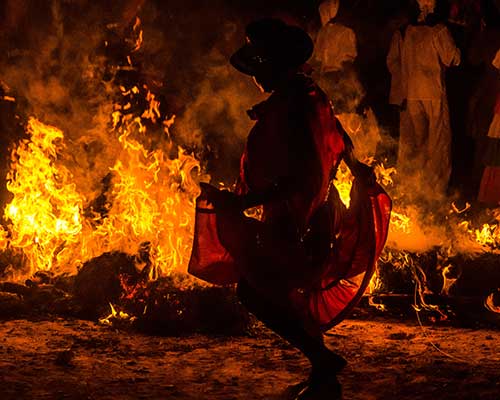
Cuba Fire Festival
Organized by Casa del Caribe, the annual Cuba Fire Festival will take place in Santiago de Cuba from July 2, 2026 to July 9, 2026. With musical venues at 50 locations and city streets lined with bars and stalls, rum-fuelled revellers get in the festival spirit as live bands, musicians and DJs keep crowds at fever pitch well into the nighttime hours.
Book NowCuba Fire Festival
Organized by Casa del Caribe, the annual Cuba Fire Festival will take place in Santiago de Cuba from July 2, 2026 to July 9, 2026. With musical venues at 50 locations and city streets lined with bars and stalls, rum-fuelled revellers get in the festival spirit as live bands, musicians and DJs keep crowds at fever pitch well into the nighttime hours.
Book Now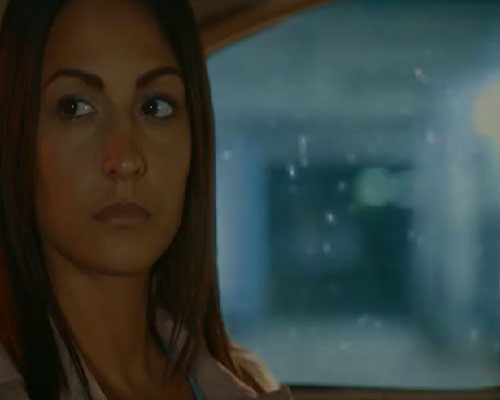
Havana Film Festival
The Havana Film Festival promotes the cinematographic works of Spanish- language filmmakers from Latin America, Spain and Cuba. It is sponsored by the Cuban Institute of the Cinematographic Art and Industry, ICAIC. The 46th edition of the Festival International del Nuevo Cine Latinoamericano will take place from December 4, 2025 to December 14, 2025.
Book NowHavana Film Festival
The Havana Film Festival promotes the cinematographic works of Spanish- language filmmakers from Latin America, Spain and Cuba. It is sponsored by the Cuban Institute of the Cinematographic Art and Industry, ICAIC. The 46th edition of the Festival International del Nuevo Cine Latinoamericano will take place from December 4, 2025 to December 14, 2025.
Book Now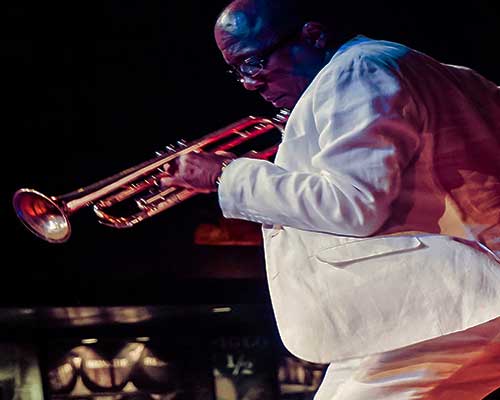
Havana Jazz Festival
The 41st International Jazz Festival of Havana, which is sponsored by famed Cuban jazz artist Chucho Valdes and ICM, or the Cuban Institute of Music, will be held in numerous locations throughout La Habana from January 25, 2026 to February 1, 2026. More than 100 international bands have joined Cuba’s top Jazz musicians in previous festivals.
Book NowHavana Jazz Festival
The 41st International Jazz Festival of Havana, which is sponsored by famed Cuban jazz artist Chucho Valdes and ICM, or the Cuban Institute of Music, will be held in numerous locations throughout La Habana from January 25, 2026 to February 1, 2026. More than 100 international bands have joined Cuba’s top Jazz musicians in previous festivals.
Book Now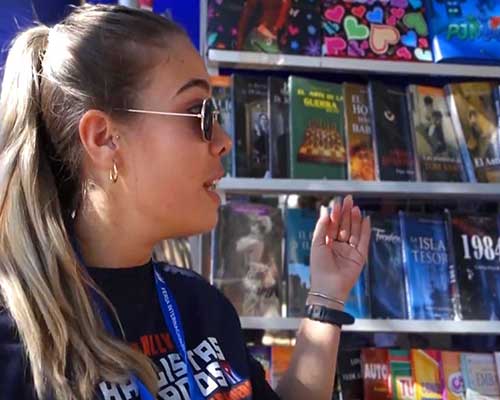
Havana Book Fair
The 34th International Book Fair of Havana will take place in Havana City from February 12 to February 22, 2026. Along with the public, the book fair is attended by Cuban and international authors, publishers, and political officials. Organized by the Cuban Book Institute, the fair transforms the Spanish fortification La Cabana into one of the biggest book parties in the world.
Book NowHavana Book Fair
The 34th International Book Fair of Havana will take place in Havana City from February 12 to February 22, 2026. Along with the public, the book fair is attended by Cuban and international authors, publishers, and political officials. Organized by the Cuban Book Institute, the fair transforms the Spanish fortification La Cabana into one of the biggest book parties in the world.
Book Now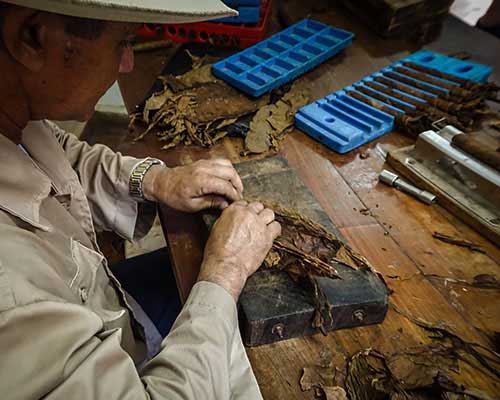
Habano Cigar Festival
Considered by many to be the world’s biggest premium cigar celebration, the XXVI Cigar Festival of Cuba will take place from February 23 to February 27, 2026. The Habano Cigar Festival's Exhibit Fair at Palacio de Las Convenciones regularly attracts some 1500 producers, distributors and businessmen, as well as large numbers of Cigar aficionados and tourists.
Book NowHabano Cigar Festival
Considered by many to be the world’s biggest premium cigar celebration, the XXVI Cigar Festival of Cuba will take place from February 23 to February 27, 2026. The Habano Cigar Festival's Exhibit Fair at Palacio de Las Convenciones regularly attracts some 1500 producers, distributors and businessmen, as well as large numbers of Cigar aficionados and tourists.
Book Now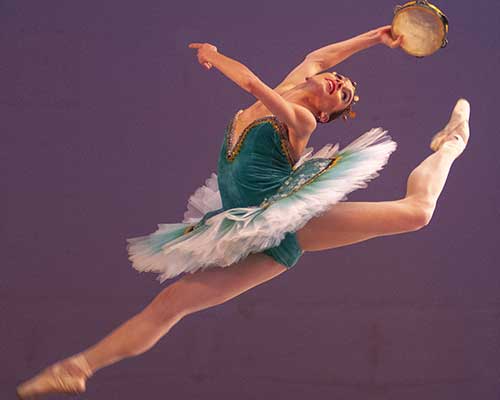
Havana Ballet Festival
The 29th Anniversary of the International Ballet Festival of Havana Alicia Alonso will take place from October 28 to November 6, 2026. Dancers, ballet companies, and choreographers from across the world look forward to the event, which is hosted by Cuba’s National Ballet at the Great Theatre of Havana, the Karl Marx Theatre and the Mella Theatre.
Book NowHavana Ballet Festival
The 29th Anniversary of the International Ballet Festival of Havana Alicia Alonso will take place from October 28 to November 6, 2026. Dancers, ballet companies, and choreographers from across the world look forward to the event, which is hosted by Cuba’s National Ballet at the Great Theatre of Havana, the Karl Marx Theatre and the Mella Theatre.
Book Now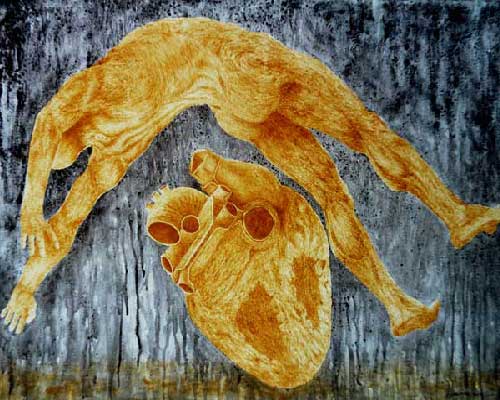
Havana Art Biennial
The 16th Havana Art Biennial will take place from November 15, 2027 to February 28, 2028. The rooster of international and national visual artists will include more than 200 creators from about 20 countries. According to the Wifredo Lam Art Center (organizing institution), the festival will turn the city into an interactive cultural corridor between the creators and public.
Book NowHavana Art Biennial
The 16th Havana Art Biennial will take place from November 15, 2027 to February 28, 2028. The rooster of international and national visual artists will include more than 200 creators from about 20 countries. According to the Wifredo Lam Art Center (organizing institution), the festival will turn the city into an interactive cultural corridor between the creators and public.
Book Now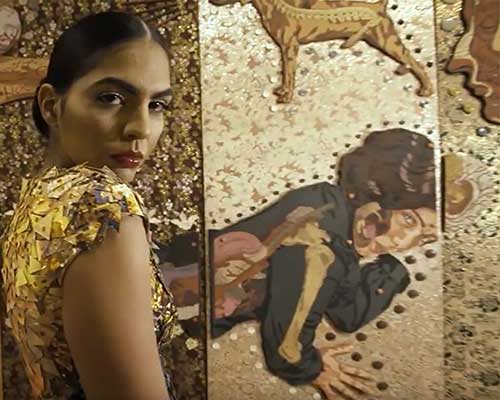
Art & Fashion Festival
The 22nd Edition of the Arte y Moda Festival will take place in the Cuban capital from November 6 to 8, 2026. The event showcases the creativity and innovation of Cuban designers, particularly their emphasis on sustainability through the use of natural and recycled materials. They utilize innovative textiles, focusing on experimental and forward looking fashion.
Book NowArt & Fashion Festival
The 22nd Edition of the Arte y Moda Festival will take place in the Cuban capital from November 6 to 8, 2026. The event showcases the creativity and innovation of Cuban designers, particularly their emphasis on sustainability through the use of natural and recycled materials. They utilize innovative textiles, focusing on experimental and forward looking fashion.
Book Now







CUBA TOUR FINDER
Select your authentic Cuba trip from over 70 Cuba tours in seconds. Sort by departure date, price, destination and even Cuba travel theme.
QUICK CUBA TOUR FINDERCuba Themed Tours
If you’ve got an idea of which style of trip will suit you best, take a look at our different trip themes below, as there’s something to suit everyone. Not only are there themed tours to fit any budget and interest, each Authentic Cuba Travel® experience immerses you in the authentic Cuba so hard to explore while just staying in full packed beach resorts.
Festival Tours
Our festival tours give travelers VIP access to all venues and happenings of Cuba’s famous international events such as the Havana Jazz Festival, Book Fair, Ballet Festival and others.
Study Tours
Through peer to peer interaction, our Cuba Study Tours® transcend ordinary tourism by immersing American students in the local culture, history, politics, music and contemporary arts.
Cultural Tours
Cuba Pathfinder® is your gateway to discover the unique Cuban cultural heritage, a set of traditions & memories not showcased in museums but much alive & thriving.
Architecture Tours
An architectural passage through Cuba’s best preserved colonial cities and unique architectural heritage, our architecture tours visit all UNESCO World Heritage Sites in Cuba.
Photography Tours
Capturing stirring pictures of authentic Cuban destinations it is not the only mission of our photography tours. Capture the essence of the Cuban culture and the kindness of its people.
Educational Tours
Our educational tours represents a great opportunity for K-12 teachers, university & college professors to explore Cuba’s education system while exploring colonial cities, towns and villages.
Nature Tours
An odyssey into Cuba's tropical paradise, our nature & bird watching tours gain access to the most pristine natural sites, from UNESCO Biosphere Reserves to National Parks.
Jewish Tours
A journey into the Jewish history in Cuba, our tours will strengthen the ties between Cuban Jewish communities and North American Jews. All while visiting 4 UNESCO World Heritage Sites!
Sports Tours
What sets our sports tours apart are the private exchanges with players, coaches & staff as well as sports journalists & personalities. Then you have best seats at the games!
List of Cuba Tours 2026
-
Tour Name
Tour Dates
Cost
-
Havana Film Festival
Havana, Vinales
Dec 8- Dec 15, 2025
$2,899 Book Now
-
Real Cuba Tour 12
Havana, Las Terrazas, Vinales
Dec 26- Jan 2, 2026
$2,799 Book Now
-
Cuba Engage Tour 12
Havana, Bay of Pigs, Trinidad
Dec 26- Jan 2, 2026
$2,799 Book Now
-
Cuba Education Tour 9
Havana, Cienfuegos, Trinidad
Dec 26- Jan 2, 2026
$2,599 Book Now
-
Cuba Education Tour 10
Havana, Bay of Pigs, Santa Clara
Dec 26- Jan 2, 2026
$2,599 Book Now
-
Cuba Education Tour 11
Havana, Santiago de Cuba
Dec 26- Jan 2, 2026
$2,799 Book Now
-
Bird Watching Tour
Havana, Zapata, Trinidad
Dec 26- Jan 2, 2026
$2,599 Book Now
-
Cuba Architecture II
Havana, Cienfuegos, Trinidad
Dec 26- Jan 2, 2026
$2,799 Book Now
-
Cuba Art Explorer IV
Havana, Las Terrazas
Dec 26- Jan 2, 2026
$2,799 Book Now
-
Photography Tour IV
Havana, Vinales, Trinidad
Dec 26- Jan 2, 2026
$2,729 Book Now
-
Jewish Heritage Tour
Havana, Cienfuegos, Trinidad
Dec 26- Jan 2, 2026
$2,899 Book Now
-
Family Discovery Tour
Havana, Cienfuegos, Trinidad
Dec 26- Jan 2, 2026
$2,699 Book Now
-
Real Cuba Tour 1
Havana, Las Terrazas, Vinales
Jan 10- Jan 17, 2026
$2,599 Book Now
-
Cuba Engage Tour 1
Havana, Bay of Pigs, Trinidad
Jan 10- Jan 17, 2026
$2,599 Book Now
-
Cuba Jazz Festival
Havana, Cienfuegos, Trinidad
Jan 25- Feb 2, 2026
$3,099 Book Now
-
Santiago Jazz Festival
Santiago de Cuba
Jan 25- Feb 1, 2026
$2,899 Book Now
-
Havana Jazz Festival
Havana, Vinales
Jan 28- Feb 2, 2026
$2,499 Book Now
-
Havana Book Fair
Havana, Cienfuegos, Trinidad
Feb 13- Feb 20, 2026
$2,799 Book Now
-
Real Cuba Tour 2
Havana, Las Terrazas, Vinales
Feb 7- Feb 14, 2026
$2,599 Book Now
-
Cuba Engage Tour 2
Havana, Bay of Pigs, Trinidad
Feb 7- Feb 14, 2026
$2,599 Book Now
-
Habano Cigar Festival
Havana, Vinales
Feb 21- Feb 28, 2026
$8,999 Book Now
-
Cuba Education Tour 1
Havana, Cienfuegos, Trinidad
Feb 21- Feb 28, 2026
$2,599 Book Now
-
Cuba Education Tour 2
Havana, Cienfuegos, Trinidad
Feb 28- Mar 7, 2026
$2,599 Book Now
-
Cuba Al Natural
Havana, Zapata, Trinidad
Mar 7- Mar 18, 2026
$2,859 Book Now
-
Cuba Business Tour 1
Havana, Matanzas, Varadero
Mar 7- Mar 14, 2026
$2,599 Book Now
-
Healthcare Cuba Tour 1
Havana, Cienfuegos, Trinidad
Mar 7- Mar 14, 2026
$2,599 Book Now
-
Real Cuba Tour 3
Havana, Las Terrazas, Vinales
Mar 7- Mar 14, 2026
$2,599 Book Now
-
Cuba Engage Tour 3
Havana, Bay of Pigs, Trinidad
Mar 7- Mar 14, 2026
$2,599 Book Now
-
Cuba Art Explorer I
Havana, Vinales
Mar 7- Mar 14, 2026
$2,599 Book Now
-
Bird Watching Tour
Havana, Zapata, Trinidad
Mar 7- Mar 14, 2026
$2,599 Book Now
-
Cuba Education Tour 3
Havana, Cienfuegos, Trinidad
Mar 7- Mar 14, 2026
$2,599 Book Now
-
Cuba Education Tour 4
Havana, Vinales
Mar 14- Mar 21, 2026
$2,599 Book Now
-
Photography Tour I
Havana, Vinales, Trinidad
Apr 4- Apr 11, 2026
$2,629 Book Now
-
The Nature of Cuba
Havana, Vinales, Trinidad
Apr 4- Apr 13, 2026
$2,799 Book Now
-
Real Cuba Tour 4
Havana, Las Terrazas, Vinales
Apr 4- Apr 11, 2026
$2,599 Book Now
-
Cuba Engage Tour 4
Havana, Bay of Pigs, Trinidad
Apr 4- Apr 11, 2026
$2,599 Book Now
-
4 Biosphere Reserves
Rosario, Zapata, Buenavista
May 1- May 10, 2026
$2,999 Book Now
-
Real Cuba Tour 5
Havana, Las Terrazas, Vinales
May 9- May 16, 2026
$2,599 Book Now
-
Cuba Engage Tour 5
Havana, Bay of Pigs, Trinidad
May 9- May 16, 2026
$2,599 Book Now
-
Photography Tour II
Havana, Vinales, Trinidad
Jun 6- Jun 13, 2026
$2,629 Book Now
-
Cuba Art Explorer II
Havana, Cienfuegos, Trinidad
Jun 6- Jun 13, 2026
$2,599 Book Now
-
Cuba Education Tour 5
Havana, Cienfuegos, Trinidad
Jun 6- Jun 13, 2026
$2,599 Book Now
-
Real Cuba Tour 6
Havana, Las Terrazas, Vinales
Jun 6- Jun 13, 2026
$2,599 Book Now
-
Cuba Engage Tour 6
Havana, Bay of Pigs, Trinidad
Jun 6- Jun 13, 2026
$2,599 Book Now
-
Cuba Fire Festival
Havana, Santiago de Cuba
Jul 2- Jul 9, 2026
$2,799 Book Now
-
Real Cuba Tour 7
Havana, Las Terrazas, Vinales
Jul 4- Jul 11, 2026
$2,599 Book Now
-
Cuba Engage Tour 7
Havana, Bay of Pigs, Trinidad
Jul 4- Jul 11, 2026
$2,599 Book Now
-
Cuba Business Tour 2
Havana, Matanzas, Varadero
Jul 4- Jul 11, 2026
$2,599 Book Now
-
Healthcare Cuba Tour 2
Havana, Cienfuegos, Trinidad
Jul 4- Jul 11, 2026
$2,599 Book Now
-
Cuba Education Tour 6
Havana, Santiago de Cuba
Jul 4- Jul 11, 2026
$2,799 Book Now
-
Cuba Education Tour 7
Havana, Las Terrazas & Vinales
Jul 11- Jul 18, 2026
$2,599 Book Now
-
Jews of Cuba Travel
Havana, Santa Clara, Cienfuegos
Aug 6- Aug 13, 2026
$2,799 Book Now
-
Real Cuba Tour 8
Havana, Las Terrazas, Vinales
Aug 8- Aug 15, 2026
$2,599 Book Now
-
Cuba Engage Tour 8
Havana, Bay of Pigs, Trinidad
Aug 8- Aug 15, 2026
$2,599 Book Now
-
Photography Tour III
Havana, Vinales, Trinidad
Aug 8- Aug 15, 2026
$2,629 Book Now
-
Cuba Education Tour 8
Havana, Cienfuegos, Trinidad
Aug 8- Aug 15, 2026
$2,599 Book Now
-
Cuba Art Explorer III
Havana, Vinales
Aug 8- Aug 15, 2026
$2,599 Book Now
-
Cuba Legal Travel
Havana, Vinales
Aug 8- Aug 15, 2026
$2,799 Book Now
-
Cuba Architecture I
Havana, Cienfuegos, Trinidad
Aug 8- Aug 15, 2026
$2,599 Book Now
-
Seven Cities II
Havana, Santiago de Cuba
Aug 8- Aug 19, 2026
$3,329 Book Now
-
Real Cuba Tour 9
Havana, Las Terrazas, Vinales
Sep 5- Sep 12, 2026
$2,599 Book Now
-
Cuba Engage Tour 9
Havana, Bay of Pigs, Trinidad
Sep 5- Sep 12, 2026
$2,599 Book Now
-
Baseball Tour
Havana, Cienfuegos, Trinidad
Sep 5- Sep 12, 2026
$2,999 Book Now
-
African Heritage
Havana, Las Terrazas, Vinales
Oct 3- Oct 9, 2026
$2,699 Book Now
-
Real Cuba Tour 10
Havana, Las Terrazas, Vinales
Oct 3- Oct 10, 2026
$2,599 Book Now
-
Cuba Engage Tour 10
Havana, Bay of Pigs, Trinidad
Oct 3- Oct 10, 2026
$2,599 Book Now
-
Dance Cuba Tour
Havana, Las Terrazas
Oct 3- Oct 10, 2026
$2,599 Book Now
-
Performing Arts Tour
Havana, Cienfuegos, Trinidad
Oct 3- Oct 10, 2026
$2,599 Book Now
-
Cuba Ballet Festival
Havana, Vinales
Oct 31- Nov 7, 2026
$2,999 Book Now
-
Jo Jazz Havana
Havana, Las Terrazas, Vinales
Nov 4- Nov 11, 2026
$2,799 Book Now
-
Seven Cities I
Havana, Santiago de Cuba
Nov 5- Nov 16, 2026
$3,329 Book Now
-
Cuba Nature Tour
Havana, Vinales, Trinidad
Nov 6- Nov 15, 2026
$2,799 Book Now
-
Art & Fashion Festival
Havana, Cienfuegos, Trinidad
Nov 6- Nov 13, 2026
$2,699 Book Now
-
Real Cuba Tour 11
Havana, Las Terrazas, Vinales
Nov 7- Nov 14, 2026
$2,599 Book Now
-
Cuba Engage Tour 11
Havana, Bay of Pigs, Trinidad
Nov 7- Nov 14, 2026
$2,599 Book Now
-
Cuba Business Tour 3
Havana, Matanzas, Varadero
Nov 7- Nov 14, 2026
$2,599 Book Now
-
Healthcare Cuba Tour 3
Havana, Cienfuegos, Trinidad
Nov 7- Nov 14, 2026
$2,599 Book Now
-
Havana Art Biennial
Havana, Vinales
Dec 11- Dec 18, 2027
$2,799 Book Now
SUBSCRIBE
Authentic Cuba Travel® Newsletter provides valuable information about 2025 Cuba Festivals Tours. We work together with key Cuban ministries and organizing committees in the organization of Cuba tours for the Havana Jazz Festival, Santiago de Cuba Jazz Festival, Havana Book Fair, Habano Cigar Festival, Fire Festival, Havana Art Biennial, Film Festival, Havana Ballet Festival and others. Be the first to know about exciting Cuba Study Tours®!
NewsletterMemberships & Affiliations
Bella Travel Group Ltd. (Federal Corporation number: 765324-7) owns and operates the following registered trademarks: Authentic Cuba Travel® is a trademark registered at the Canadian Intellectual Property Office (CIPO), Registration No. TMA975677 | Cuba Pathfinder® is a trademark registered at the Canadian Intellectual Property Office (CIPO), Registration No. TMA997988 | Cuba Pathfinder® is a trademark registered at the United States Patent and Trademark Office (USPTO), Registration No. 5498353 | Cuba Study Tours, Make Cuba Your Classroom® is a trademark registered at the United States Patent and Trademark Office (USPTO), Registration No. 5833051.

 1-877-280-2054 (North America)
1-877-280-2054 (North America) 647-351-8191
(Worldwide)
647-351-8191
(Worldwide)
 647-351-8191
(Worldwide)
647-351-8191
(Worldwide)

